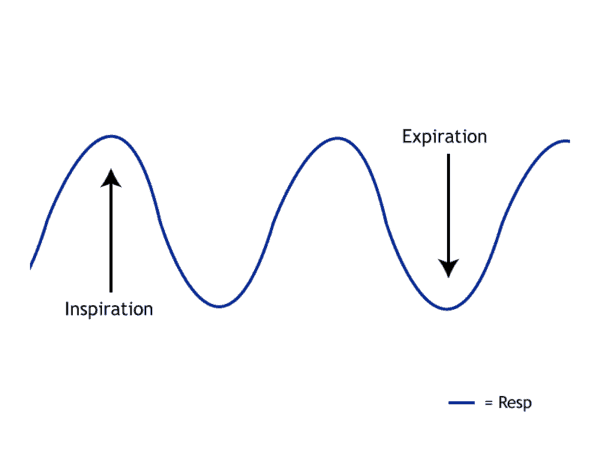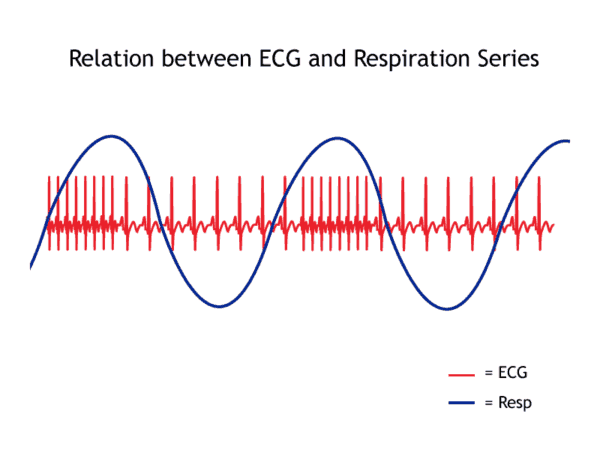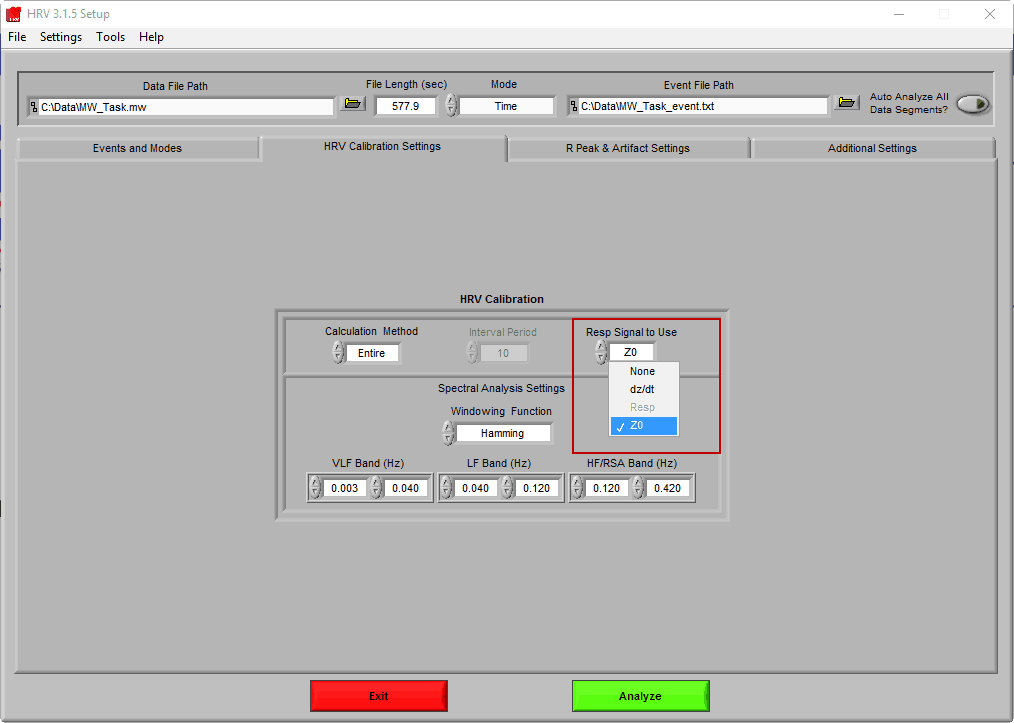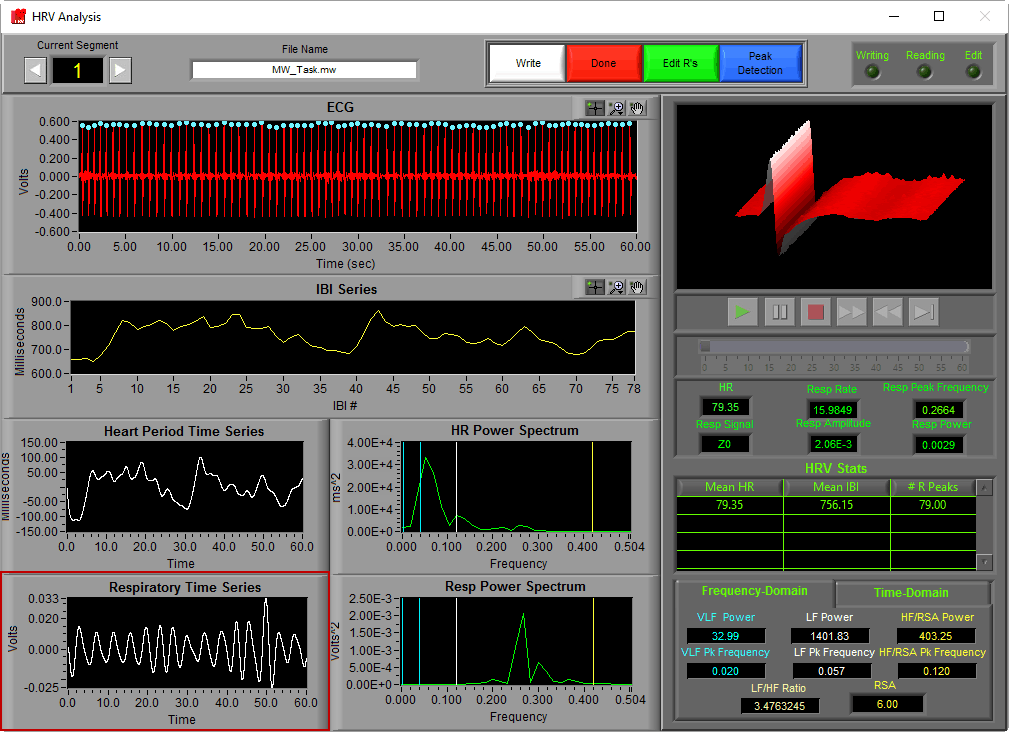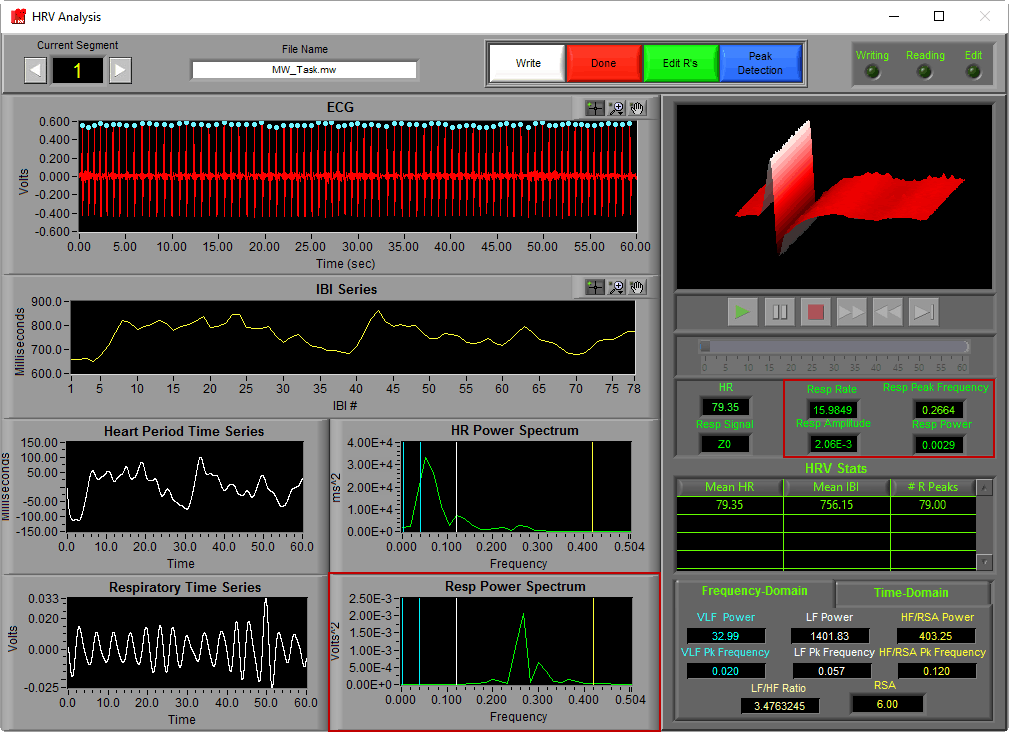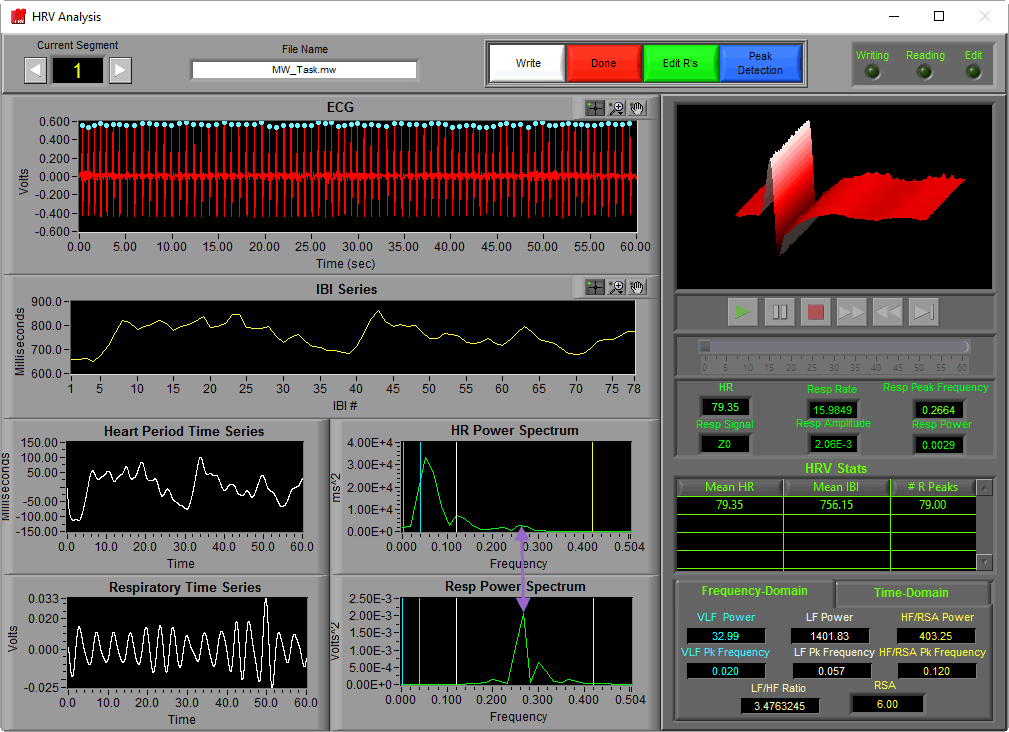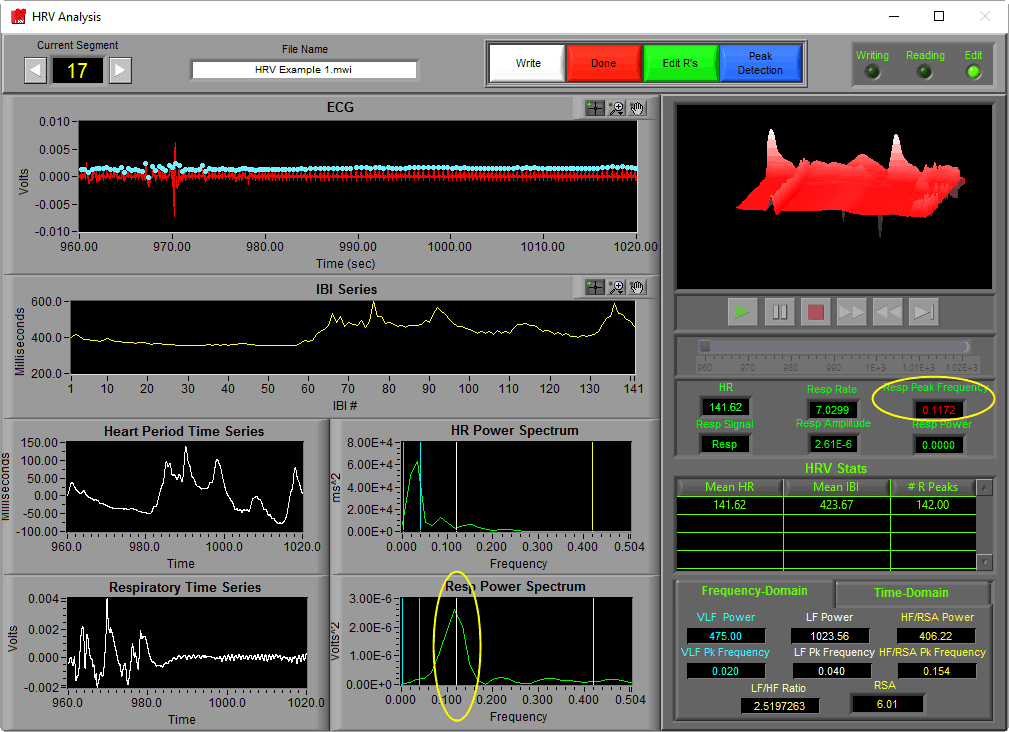Last time we talked about how the IBI series is transformed from the time-domain to a frequency-domain representation. This is done to isolate specific frequency ranges of variability. One of the frequency bands, named the High Frequency (HF) band, is influenced predominantly by a phenomenon known as respiratory sinus arrhythmia.
Respiratory Sinus Arrhythmia (RSA)
Respiratory Sinus Arrhythmia (RSA) is the phenomenon by which heart rate is modulated by respiration. Recall the respiration diagram from Part 1 with alternating cycles of inspiration and expiration
By overlaying this signal on ECG we can observe the effects of respiration on heart rate. Specifically, we can see that heart increases during inspiration, and decreases during expiration.
Note: The above diagram is an oversimplification. In reality heart rate changes more gradually throughout the respiration cycle, as opposed to the abrupt changes used for illustration.
Respiration rate typically falls in the range of high frequency HRV, and is the largest contributing component to variability in this frequency range. Using frequency-domain analysis, RSA is defined as
As mentioned previously, RSA is used as a metric to express parasympathetic nervous system regulation.
Validating RSA with Respiration
Notice that in the above equation, there are no components of respiration (e.g. respiration rate) that are used in quantifying RSA. Obviously respiration is a huge component of RSA, but the metric is entirely based on beat-to-beat timing. So why collect respiration if it isn’t part of the calculation? Because it can be used to confirm the validity of the RSA metric.
Setting up Respiration
On the Setup screen in the HRV Analysis application you can specify the respiration source using the Resp Signal to Use setting on the HRV Calibration Settings tab
Recall from Part 1 that respiration can be measured directly, or derived from cardiac impedance.
When a respiration source is selected, you will see it displayed in the bottom left hand corner of the Analysis screen labeled Respiratory Time Series
To validate RSA with respiration, we need to look at it from a frequency-domain perspective as well. This is done by following the same procedure as the Heart Period Time Series, except that respiration can be passed directly to the FFT, so there is no need for interpolation/detrending. The resulting Resp Power Spectrum can be found to the right. From this representation, several statistics are derived regarding respiration including Resp Rate, Resp Peak Frequency, Resp Amplitude, and Resp Power.
Validating RSA
In order for RSA to be considered valid, the detected respiration rate must fall within the same frequency band as the HF/RSA band in the HR Power Spectrum. This is part of the reason for adjusting frequency bands based on age/species (different expected respiration rates).
You will notice that those same frequency bands are shown on the Resp Power Spectrum. The peak respiratory frequency should roughly correspond to a peak in the HF/RSA band of the HR Power Spectrum.
In the event that the Respiratory Peak Frequency (and therefore Resp Rate) is detected outside the HF/RSA band, the Resp Peak Frequency statistic will be highlighted in red
In these situations, HF Power cannot be assumed to be an index of respiratory sinus arrhythmia, and the segment cannot be validated. It is worth investigating the respiration waveform to see if this is a result of noise or increased /abnormal respiration rate. If the respiration peak frequency falls only a bit outside the expected band, it may be acceptable to still use this information, albeit with some caution.
Helpful Hints
- Be sure to ask your subjects about pacemakers, or medications they are taking that are known to diminish or eliminate respiratory sinus arrhythmia
- If you are planning to report RSA, be sure to also collect a source of respiration to validate it
- Respiration statistics are output alongside HRV metrics in the output file, ready to be used in future reporting
Next time we will discuss data editing techniques specific to HRV analysis.

